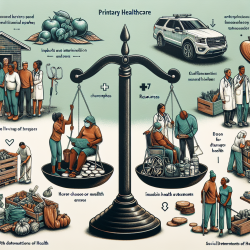Introduction
The systematic review titled "Alcohol use among adolescents in India: a systematic review" presents a comprehensive analysis of alcohol consumption patterns among Indian adolescents. As a speech-language pathologist, understanding the implications of these findings can be crucial in enhancing therapeutic interventions and advocating for evidence-based policy changes. This blog aims to highlight key outcomes from the review and suggest ways practitioners can leverage this information to improve their practice.
Key Findings
The review synthesizes data from 55 peer-reviewed papers and one report, revealing a wide range in the prevalence of alcohol use among adolescents in India. Lifetime alcohol consumption ranged from 3.9% to 69.8%, with current use ranging from 10.6% to 32.9%. The mean age of initiation was found to be between 14.4 and 18.3 years, with significant correlations identified between alcohol use and factors such as gender, age, academic difficulties, and parental substance use.
Implications for Practitioners
Practitioners can draw several insights from these findings to enhance their therapeutic approaches:
- Early Intervention: The data highlights the importance of early intervention, as alcohol use often begins in adolescence. Speech-language pathologists can incorporate screening for alcohol use into their assessments and provide early support and resources to at-risk youth.
- Family Involvement: Given the influence of parental substance use, involving families in therapy sessions can be beneficial. Educating parents about the risks associated with adolescent alcohol use and encouraging healthy family dynamics can mitigate these risks.
- Targeted Education: Practitioners can develop educational programs tailored to adolescents, focusing on the cognitive and social consequences of alcohol use. These programs can be integrated into school-based interventions to reach a broader audience.
Encouraging Further Research
While the review provides valuable insights, it also highlights significant gaps in the existing literature. Practitioners are encouraged to engage in further research to address these gaps, particularly in areas such as the impact of digital media on adolescent alcohol use and the effectiveness of intervention strategies in diverse cultural contexts.
Conclusion
The systematic review underscores the urgent need for data-driven approaches to address adolescent alcohol use in India. By integrating these findings into practice, speech-language pathologists can play a pivotal role in reducing the prevalence of alcohol use and its associated risks among adolescents. To read the original research paper, please follow this link: Alcohol use among adolescents in India: a systematic review.










